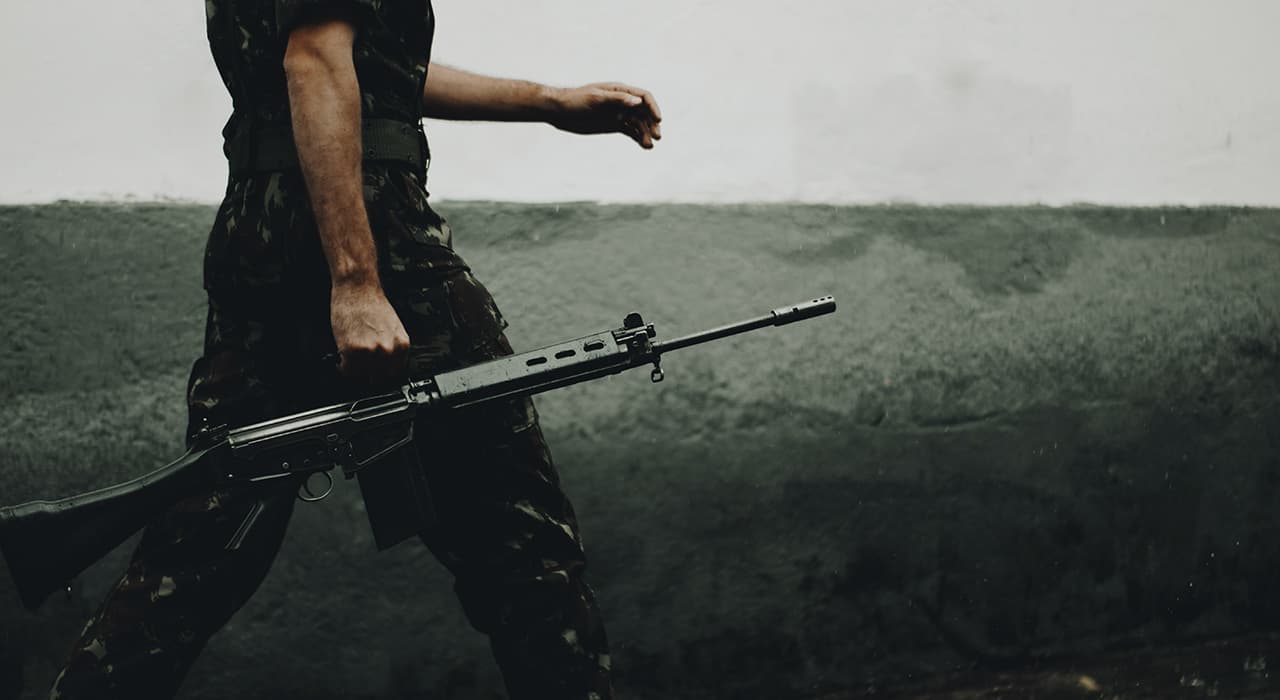For a split second at the very beginning of Clint Eastwood’s Letters from Iwo Jima, you might think you’re looking at a field of stars overhead. In fact, you’re looking straight down at the ground, at waves of black sand on a volcanic island where, for five weeks in February and March 1945, an invasion force of 100,000 Americans (two-thirds of them U.S. Marines) battled 22,000 Japanese infantrymen who had entrenched themselves. Only 1,083 Japanese survived the battle, while 6,821 Americans were killed and 20,000 wounded.
It’s a simple establishing shot: a tilt from the beach where the Allied troops landed to Mount Suribachi, the rocky hill on the southern part of the island where the Japanese hid in a network of tunnels and bunkers, and on top of which the famous iconic image of the American flag being raised was taken. This classically heroic photograph, and the collateral damage of its use as a propaganda tool to sell war bonds, was the subject of Eastwood’s 2006 film Flags of Our Fathers, the companion piece (or other half) to Letters from Iwo Jima, though it doesn’t really matter which one you see first.
The opening moments of “Letters” have a cosmic zoom effect, bringing us from the timeless and abstract (stars/sand) to a concrete place and time: “Iwo Jima 2005,” as the title indicates. It was on this barren little sulfuric layer in the Pacific Ocean, only about five miles from one edge to the other, that so many people fought and died 60 years ago.
“Flags of Our Fathers ended with a similar movement, from images in memory of surviving Marines frolicking in the surf, to the stars and stripes on top of Mount Suribachi and warships in the harbor, and finally to the sky (another reason why you may think you’re looking up instead of down at the beginning of Letters, which begins with a view in the opposite direction from the end of Flags). The camouflaged artillery that proved so deadly and threatening in Flags is, at the beginning of Letters, just rusty relics on the site of a war memorial. Archaeologists explore the caves and tunnels of Suribachi, still wondering how the soldiers managed to build them.
And then we are back on the beach, in 1945, as Japanese soldiers prepare for the invasion they know is coming by digging trenches in the sand. It looks like a futile, Sisyphean effort. In a letter to his wife (heard off-screen), one of the diggers, a puppy-faced former baker named Saigo (Kazunari Ninomiya, in a truly winning performance), writes philosophically: “This is the pit we will fight and die in. .”
They could have died much sooner if they had stuck to this ill-conceived strategy of sand. When the new commander, General Tadamichi Kuribayashi (always Ken Watanabe’s commanding officer), arrives on Iwo Jima, he immediately changes plans, ordering men and artillery to dig in on high ground. This is preparation for the large-scale ambush we see in Flags of Our Fathers.



